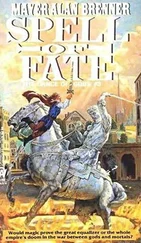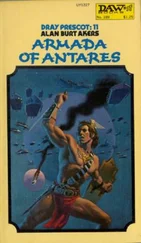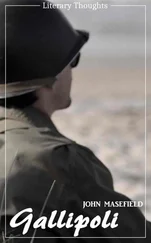The Admiralty, too, was making a large contribution. The monitors arrived to replace the battleships, strange, flat-bottomed boats of 6,000 tons, mounting 14-inch guns of American manufacture. Their most original feature was the blisters or bulges on their sides, designed to ward off the explosions of torpedoes (which the sailors soon discovered made excellent bathing platforms). Almost as important were the Beetles, the landing barges which had been designed by Fisher and which were to be the precursors of the small craft used at Normandy and other landings in the second world war. They were capable of carrying five hundred men or forty horses, and were fitted with armoured plates sufficiently strong to resist shrapnel and machine-gun fire. The name derived from the fact that they were painted black, and the long landing ramps which projected from their bows had the appearance of antennae.
Two more balloon ships, the Hector and the Canning , were sent out to assist in the artillery spotting, and there were additions to the number of trawlers, auxiliary hospital ships, and other craft. It was a less imposing fleet than the one which had originally sailed to the Dardanelles in the spring, but it was larger and much better suited to an amphibious operation in a narrow sea.
A similar change overtook the Air Force with the arrival of new seaplane carriers and pilots, the French setting themselves up on Tenedos and the British on Imbros. As many as fifteen aircraft were now able to take off together for concentrated raids on the peninsula and the Narrows.
Towards the end of July, when a lull had again settled over the front, most of these new forces were concentrated in the Ægean islands, where they were to be kept in secret until the moment came to commit them to the battle. A new landing on the enemy coast was obviously essential, and all the old arguments came up once again: Bulair was too strongly fortified, the Asiatic coast too distant from their objectives, and at neither place could the Navy give its full support to the Army on the shore. So once again it had to be the peninsula itself. The plan that finally emerged was very largely a repetition of April 25, but it had one vital difference: the emphasis was now removed from Cape Helles and Achi Baba and placed upon the Sari Bair ridge in the centre of the peninsula. Birdwood had been urging this course for some weeks past, and in many ways it appeared to be a promising design. He proposed to break out of the north of the Anzac bridgehead by night and assault Chunuk Bair and the crests of the hills, having first made a major feint at a place called Lone Pine to the south. Simultaneously there was to be a new landing at Suvla Bay, immediately to the north of Anzac, and it was hoped that as soon as the hills there were taken the combined force would push through to the Narrows about four miles away. With the bulk of the Turkish Army then bottled up in the tip of the peninsula, and under heavy pressure from the French and the British at Cape Helles, it was hoped that there would be a quick ending to the campaign, at any rate as far as the Dardanelles was concerned.
There were to be pretended landings at Bulair and from the island of Mytilene on to the Asiatic coast so as to keep Liman in doubt until after the main battle had been joined. Once again surprise was the chief element of the plan; once again the Fleet was to hold its hand until the Army had broken through.
Suvla Bay was an admirable place for the new landing. It offered a safe anchorage for the Fleet, it was backed by low undulating country, and it was known to be very lightly defended. Once ashore the soldiers would quickly join up with the Anzac bridgehead and relieve the congestion in that narrow space. There was a salt lake about a mile and a half wide directly behind the Suvla Bay beaches, but this dried up in summer, and Hamilton in any case planned to avoid it by landing in the first instance on an easy strip of coastline just south of the Bay itself. Everything depended upon the speed with which the soldiers pushed inland to the hills so that they could bring assistance to Birdwood fighting the main battle on Sari Bair. This time there was to be no repetition of the River Clyde and the Sedd-el-Bahr disaster for the troops were to come ashore by night without preliminary bombardment.
In addition to the Beetles (which were to be commanded by Commander Unwin, V.C., in the first assault), a great deal of modern equipment had been shipped out to the Ægean. An antisubmarine net, over a mile in length, was to be laid across the mouth of Suvla Bay immediately after the landing. A pontoon pier 300 feet long had been assembled at Imbros, and was to be towed across to the beach. Four 50-ton water lighters were also to be taken over by the water steamer Krini , which had another 200 tons on board in addition to pumps and hoses. As a further precaution the Egyptian bazaars were once again ransacked for camel tanks, milk cans, skins — anything that would hold water.
For a time Hamilton debated whether or not he should bring the battered but experienced 29th Division round from Cape Helles to make the first landing at Suvla, but in the end he decided that the operation should be entrusted to the new troops coming out from England. Extreme secrecy was the key to all these arrangements, and there was a special difficulty in reinforcing Birdwood for the battle. The Anzac bridgehead was not much bigger than Regent’s Park in London, or Central Park in New York (if one can imagine a park of bare cliffs and peaks), and just as much overlooked. The Navy, however, believed that over a series of nights they could smuggle another 25,000 men ashore without the Turks knowing anything about it.
The Army was finally disposed as follows: the six divisions already in Cape Helles, about 35,000 men, to remain where they were and make a northern thrust against the village of Krithia; Birdwood with his Australians, New Zealanders and a division and a half of new British troops, about 37,000 men in all, to make the main attack at Anzac, and the remainder of the reinforcements from the United Kingdom, numbering some 25,000, to go ashore at Suvla.
August 6 was fixed as the day of the offensive, since the waning moon, then in its last quarter, would not rise until about 10.30 that night, and the boats on the Suvla landing would thus be able to approach the coast in the darkness. The actual timing of the various attacks was arranged so as to create the maximum confusion in the enemy command. It was a chain reaction, a succession of explosions from south to north, beginning with the first bombardment on the Helles front at 2.30 in the afternoon. There would then follow the Australian feint at Lone Pine at 5.30, the main assault on Chunuk Bair at 9.30 at night, and the landing at Suvla about an hour later. Thus by midnight the whole front would be ablaze.
By the end of June all these plans were well advanced, and Keyes and the Army staff were again involved with their elaborate timetables for the ferrying of the troops and their supplies from the islands to the beaches. Meanwhile a crucial issue had arisen over the question of who was to have command of the new landing at Suvla. Hamilton had two men in mind, Sir Julian Byng and Sir Henry Rawlinson, but when he put their names up to Kitchener he was refused on the grounds that neither could be spared from France. The appointment, Kitchener decided, must go to the most suitable and senior Lieutenant-General who was not already in a field command. This practically narrowed the choice down to the Hon. Sir Frederick Stopford, and he duly arrived at Mudros with his chief staff officer Brigadier-General Reed, on July 11. Hamilton had misgivings about both of them. Stopford was 61, and although he had been in Egypt and the Sudan in the ’eighties, and had served as military secretary to General Buller in the Boer War, he had seen very little actual fighting and had never commanded troops in war. He had a reputation as a teacher of military history, but he had been living in retirement since 1909, and was often in ill-health. Reed, a gunner, had also been in South Africa, and had won a memorable V.C. there, but his recent experiences in France had left him with an obsession for tremendous artillery bombardments, and he could talk of very little else.
Читать дальше












